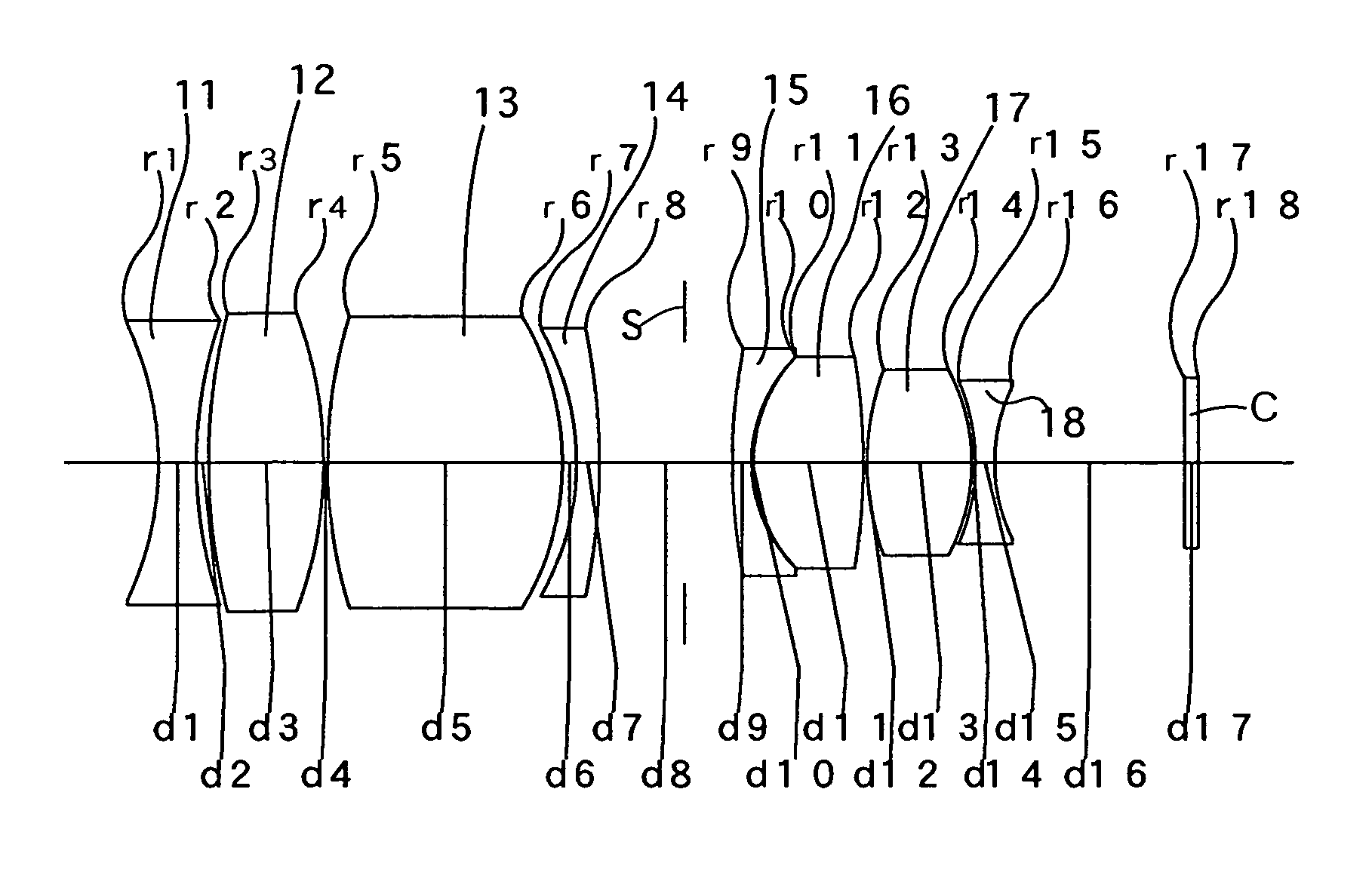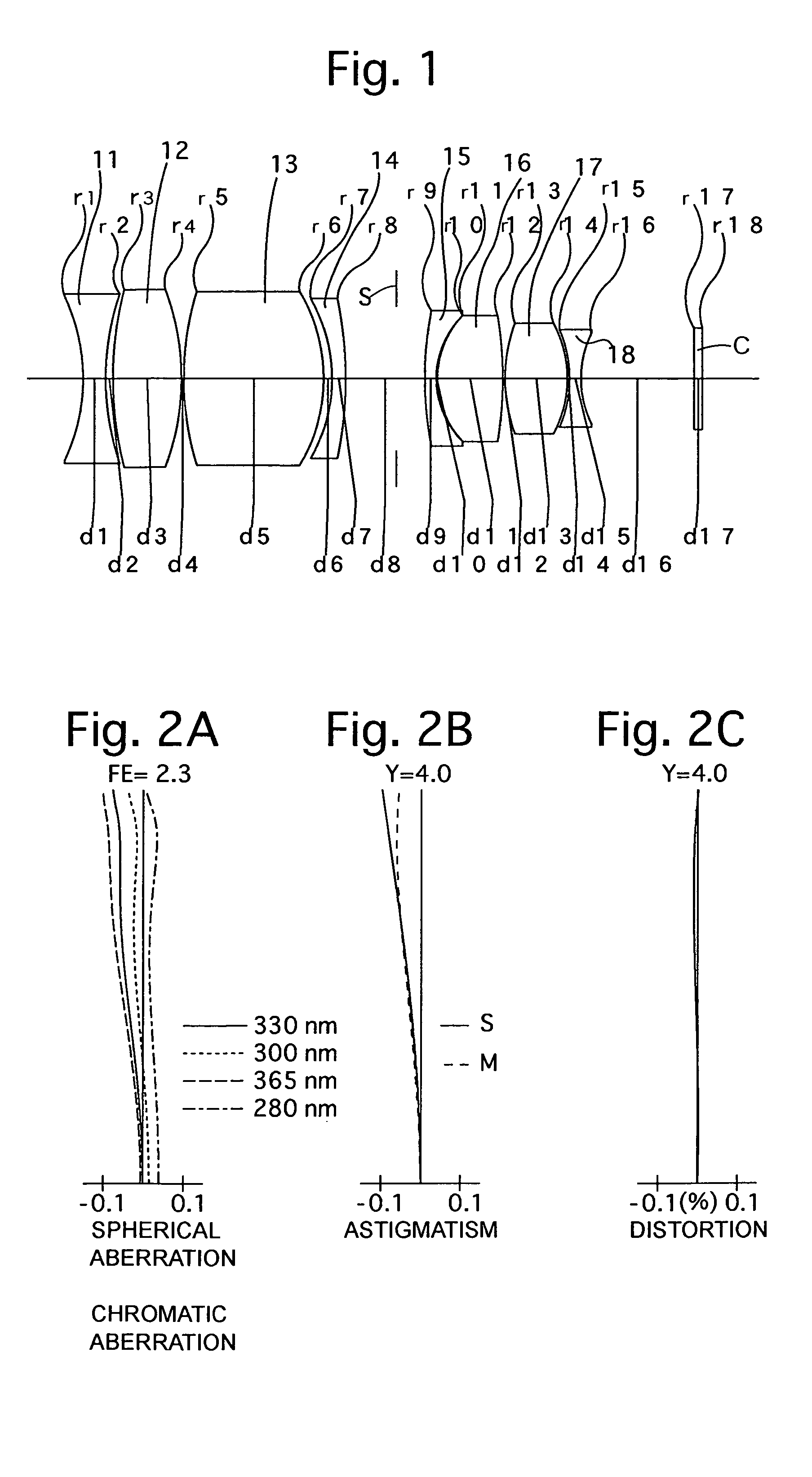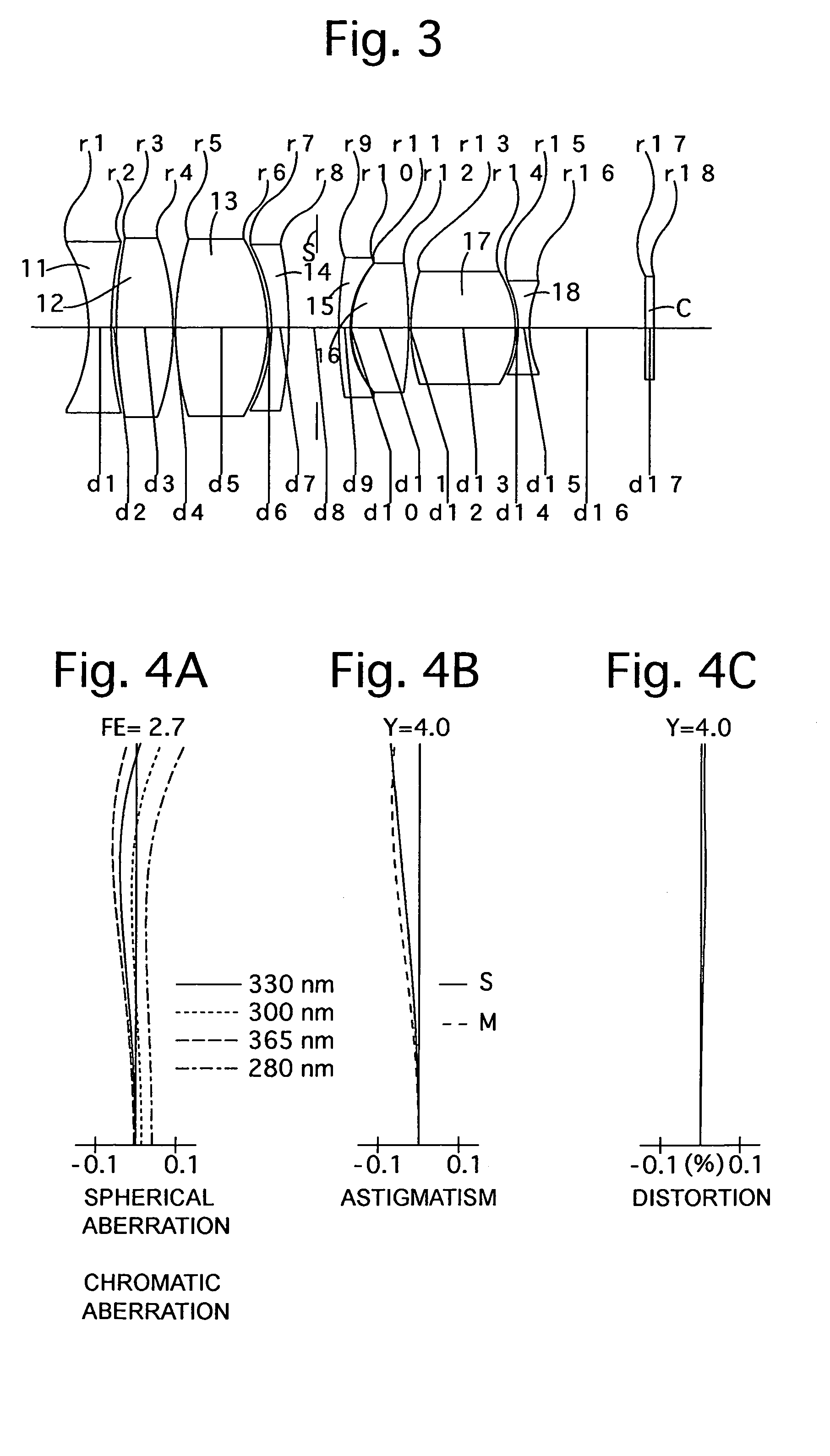Ultraviolet imaging system
an imaging system and ultraviolet light technology, applied in the field of ultraviolet light imaging systems, can solve the problems of insufficient distortion correction, inconvenient converging lens system, insufficient wide-angle lens system, etc., and achieve the effect of longer back focal distan
- Summary
- Abstract
- Description
- Claims
- Application Information
AI Technical Summary
Benefits of technology
Problems solved by technology
Method used
Image
Examples
embodiment 1
[0092]FIG. 1 is the lens arrangement of the ultraviolet imaging system, according to the first embodiment of the present invention. FIGS. 2A, 2B and 2C show aberrations occurred in the lens arrangement shown in FIG. 1 at the short focal length extremity. Table 1 shows the numerical data of the first embodiment.
[0093]A diaphragm S is provided 4.51 on the image side of the lens surface No. 8. The image plane is provided 3.95 behind lens surface No. 18. The base wavelength is 330 nm.
[0094]
TABLE 1FE = 1:2.3f = 24.96M = −0.100Y = 4.0fB = 14.46 (=10.00 + 0.75 / 1.48059 + 3.95)Surface No.rdGlass Material1−17.0782.00quartz223.4110.63331.7136.00fluorite4−22.7080.20526.67912.37fluorite6−15.0920.757−14.0931.20quartz8−35.3097.00931.6611.00quartz107.8000.10118.0565.80fluorite12−33.8970.201314.4415.54fluorite14−10.3290.2015−10.7831.00quartz169.03810.0017∞0.75quartz (plane-parallel plate)18∞—
embodiment 2
[0095]FIG. 3 is the lens arrangement of the ultraviolet imaging system, according to the second embodiment of the present invention. FIGS. 4A, 4B and 4C show aberrations occurred in the lens arrangement shown in FIG. 3 at the short focal length extremity. Table 2 shows the numerical data of the second embodiment.
[0096]A diaphragm S is provided 2.43 on the image side of the lens surface No. 8. The imaging plane is provided 4.07 behind lens surface No. 18. The base wavelength is 330 nm.
[0097]
TABLE 2FE = 1:2.7f = 24.90M = −0.100Y = 4.0fB = 14.58 (=10.00 + 0.75 / 1.48059 + 4.07)Surface No.rdGlass Material1−14.1391.98quartz232.4290.45340.3474.94fluorite4−22.9030.20527.0297.92fluorite6−15.4670.357−15.0681.50quartz8−36.3074.34935.8511.00quartz108.7060.10119.1014.94fluorite12−37.5100.201316.4089.14fluorite14−9.3000.2415−9.4461.00quartz169.88010.0017∞0.75quartz (plane-parallel plate)18∞—
embodiment 3
[0098]FIG. 5 is the lens arrangement of the ultraviolet imaging system, according to the third embodiment of the present invention. FIGS. 6A, 6B and 6C show aberrations occurred in the lens arrangement shown in FIG. 5 at the short focal length extremity. Table 3 shows the numerical data of the third embodiment.
[0099]A diaphragm S is provided 6.27 on the image side of the lens surface No. 8. The imaging plane is provided 3.95 behind lens surface No. 18. The base wavelength is 330 nm.
[0100]
TABLE 3FE = 1:2.5f = 24.95M = −0.100Y = 4.0fB = 14.46 (=10.00 + 0.75 / 1.48059 + 3.95)Surface No.rdLens Material1−12.9412.00quartz2−50.0000.203−54.1564.20fluorite4−15.2880.20531.1087.44fluorite6−14.6090.367−13.7631.20quartz81059.4918.13933.1931.00quartz108.7120.10118.8956.76fluorite12−25.0120.201311.1335.75fluorite14−11.9180.2015−11.5291.68quartz168.03710.0017∞0.75quartz (plane-parallel plate)18∞—
[0101]Table 4 shows the numerical values of each condition in each embodiment.
[0102]
TABLE 4Embod. 1Emod. 2...
PUM
 Login to View More
Login to View More Abstract
Description
Claims
Application Information
 Login to View More
Login to View More - R&D
- Intellectual Property
- Life Sciences
- Materials
- Tech Scout
- Unparalleled Data Quality
- Higher Quality Content
- 60% Fewer Hallucinations
Browse by: Latest US Patents, China's latest patents, Technical Efficacy Thesaurus, Application Domain, Technology Topic, Popular Technical Reports.
© 2025 PatSnap. All rights reserved.Legal|Privacy policy|Modern Slavery Act Transparency Statement|Sitemap|About US| Contact US: help@patsnap.com



